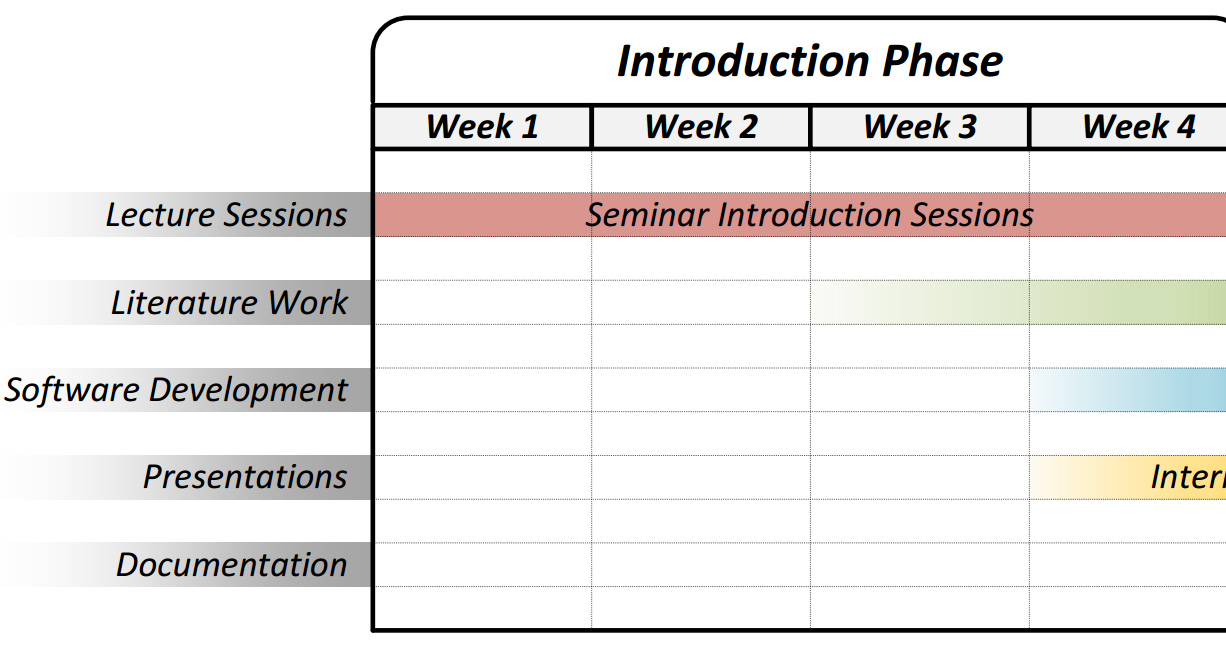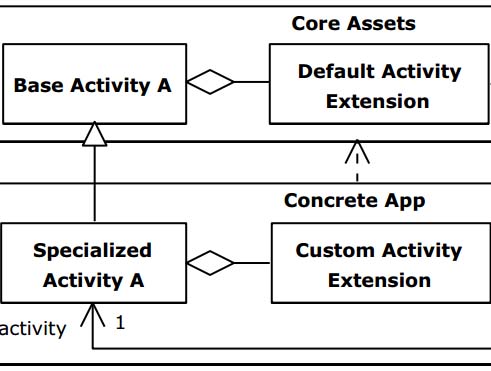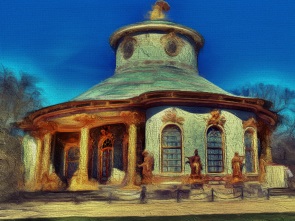AVA Project
The AVA project is about automated video abstraction
Publications in this Project
Teaching Image-Processing Programming for Mobile Devices: A Software Development Perspective
EG '18: Eurographics Education Papers 2018
Abstract, BibTeX, DOI, Paper (PDF)
In this paper we present a concept of a research course that teaches students in image processing as a building block of mobile applications. Our goal with this course is to teach theoretical foundations, practical skills in software development as well as scientific working principles to qualify graduates to start as fully-valued software developers or researchers. The course includes teaching and learning focused on the nature of small team research and development as encountered in the creative industries dealing with computer graphics, computer animation and game development. We discuss our curriculum design and issues in conducting undergraduate and graduate research that we have identified through four iterations of the course. Joint scientific demonstrations and publications of the students and their supervisors as well as quantitative and qualitative evaluation by students underline the success of the proposed concept. In particular, we observed that developing using a common software framework helps the students to jump start their course projects, while industry software processes such as branching coupled with a three-tier breakdown of project features helps them to structure and assess their progress.
@inproceedings{Trapp2018Teaching,
booktitle = {EG 2018 - Education Papers},
editor = {Post, Frits and Žára, Jirí},
title = {Teaching Image-Processing Programming for Mobile Devices: A Software Development Perspective},
author = {Trapp, Matthias and Pasewaldt, Sebastian and Dürschmid, Tobias and Semmo, Amir and Döllner, Jürgen},
year = {2018},
publisher = {The Eurographics Association},
ISSN = {1017-4656},
DOI = {10.2312/eged.20181002},
series = {EG '18},
}
Towards Architectural Styles for Android App Software Product Lines
MOBILESoft '17: Proceedings of the 4th International Conference on Mobile Software Engineering and Systems 2017
Abstract, BibTeX, DOI, Paper (PDF), Slides
Software product line development for Android apps is difficult due to an inflexible design of the Android framework. However, since mobile applications become more and more complex, increased code reuse and thus reduced time-to-market play an important role, which can be improved by software product lines. We propose five architectural styles for developing software product lines of Android apps: (1) activity extensions, (2) activity connectors, (3) dynamic preference entries, (4) decoupled definition of domain-specific behavior via configuration files, (5) feature model using Android resources. We demonstrate the benefits in an early case study using an image processing product line which enables more than 90% of code reuse.
@inproceedings{Duerschmid2017TAS,
author = {D\"{u}rschmid, Tobias and Trapp, Matthias and D\"{o}llner, J\"{u}rgen},
title = {Towards Architectural Styles for Android App Software Product Lines},
booktitle = {Proceedings of the 4th International Conference on Mobile Software Engineering and Systems},
series = {MOBILESoft '17},
year = {2017},
isbn = {978-1-5386-2669-6},
pages = {58--62},
numpages = {5},
doi = {10.1109/MOBILESoft.2017.12},
publisher = {IEEE Press},
address = {Piscataway, NJ, USA}
}
Interactive Multi-scale Oil Paint Filtering on Mobile Devices
ACM SIGGRAPH Posters 2016
Abstract, BibTeX, DOI, Paper (PDF)
This work presents an interactive mobile implementation of a filter that transforms images into an oil paint look. At this, a multi-scale approach that processes image pyramids is introduced that uses flow-based joint bilateral upsampling to achieve deliberate levels of abstraction at multiple scales and interactive frame rates. The approach facilitates the implementation of interactive tools that adjust the appearance of filtering effects at run-time, which is demonstrated by an on-screen painting interface for per-pixel parameterization that fosters the casual creativity of non-artists.
@inproceedings{Semmo2016IMO,
author = {Semmo, Amir and Trapp, Matthias and D\"{u}rschmid, Tobias and D\"{o}llner, J\"{u}rgen and Pasewaldt, Sebastian},
title = {Interactive Multi-scale Oil Paint Filtering on Mobile Devices},
booktitle = {ACM SIGGRAPH 2016 Posters},
series = {SIGGRAPH '16},
year = {2016},
isbn = {978-1-4503-4371-8},
pages = {42:1--42:2},
articleno = {42},
numpages = {2},
doi = {10.1145/2945078.2945120},
publisher = {ACM},
address = {New York, NY, USA}
}


